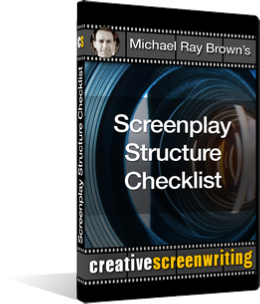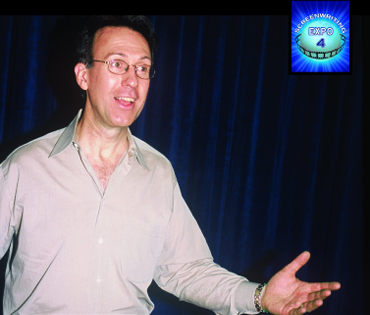

For more information: Recommended Links | Frequently Asked Questions
Copyright © 2018 by Michael Ray Brown. All rights reserved.
“First rate analysis at a cut-rate price.”
— Creative Screenwriting



*Reprinted with the permission of Erik N. Bauer, Managing Editor, Creative Screenwriting magazine.
Writers often ask me what I look for in a script. I have only one rule: The script must capture my interest, and keep me wanting to see what happens next. But how do you do this?
Do you load up your script with action? Do you keep trying to shock or surprise your audience? Do you create a “Whammy Chart” like Joel Silver (producer of The Matrix) does, and make sure there’s a “whammy” (a big action set piece) every twelve minutes? Howard Hawks said, “There are only six good scenes in any good movie.” That may be true, but there’s a saying that you have to “murder your darlings.” In other words, you have to be ruthless about cutting out what doesn’t work, even if it’s your favorite scene.
Script doctors will tell you the most important thing is structure. William Goldman says it in his book Adventures in the Screen Trade, along with the rule, “Nobody knows anything.” But what makes good structure?
A good story can be broken down into three acts. In Act One you get your hero up a tree (inciting incident). In Act Two you throw stones at him (complication). And in Act Three you get him down again (resolution). That may be an oversimplification, but it points out the one essential ingredient in all stories: jeopardy.
A story can be defined as how a character copes with danger. It’s the protagonist’s motivation to achieve an objective, coupled with the threat of failure, that drives the plot. This threat is posed by at least one antagonist. The antagonist is usually external, but there can be internal obstacles, such as a character’s fears.
It’s also been said that the essence of drama is people not getting along. However, conflict alone does not a story make. Again, the conflict must be focused on an objective. Whether it is the physical threat to the protagonist’s life (as in thrillers) or the more subtle threat to his happiness (as in romantic comedies), the danger is always that the protagonist may not achieve his goal. And that’s what keeps audiences on the edges of their seats, wanting to know what happens next.
Even if you’ve taken all the classes and read all the books, sometimes a script will just stump you. Something doesn’t quite work, but you can’t put your finger on it. When I was running the story department for Metromedia Producers Corporation, this occasionally happened to members of my staff. And so, as an aid to my analysts, I decided to compile a list of everything that could go wrong in a screenplay.
This list eventually grew to 18 major wrongs, with perhaps 100 sub-wrongs under them. When I decided to start teaching a class on structure, I rewrote the checklist as a toolkit for writers. These are the questions you must ask yourself about your script:
by Michael Ray Brown
How to Plug the Holes in Your Script

Story Sense founder Michael Ray Brown teaches a popular class on screenplay structure. This article appeared in CS Weekly, an e-mail newsletter published by the editors of Creative Screenwriting magazine*. Michael reveals the essence of story and what led him to develop a checklist of everything a great screenplay should have. When you are ready to gauge whether your script is working, click on the button below.


 Go to the List
Go to the List
A Structure Checklist



| Development Notes |
| Oral Consultation |
| Studio-style Coverage |
| Selling Synopsis |
| Proofreading |
| Sample Script Analysis |
| Sample Coverage |
| Sample Selling Synopsis |
| SolPix Interview |
| Creative Screenwriting Interview |
| Scriptwriter Interview #1 |
| Scriptwriter Interview #2 |
| Scriptwriter Interview #3 |
| Scriptwriter Interview #4 |
| Elements of a Great Script |
| Margin Settings |
| Scene Headings |
| Slug Lines |
| Description |
| Character Cues |
| Dialogue |
| Personal Direction |
| Transitions |
| Flashbacks |
| Montages |
| Telephone Calls |
| Registration |
| Software |